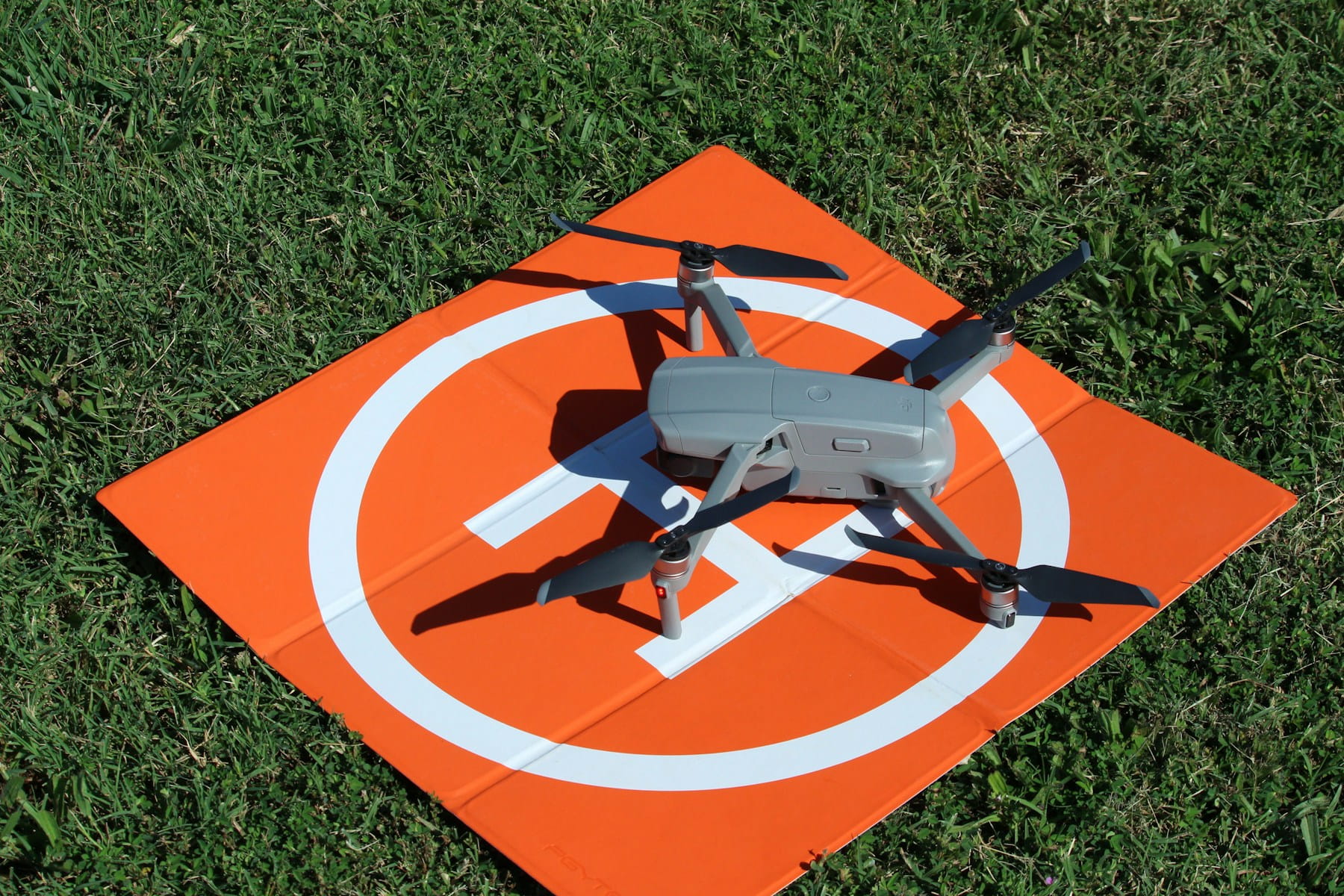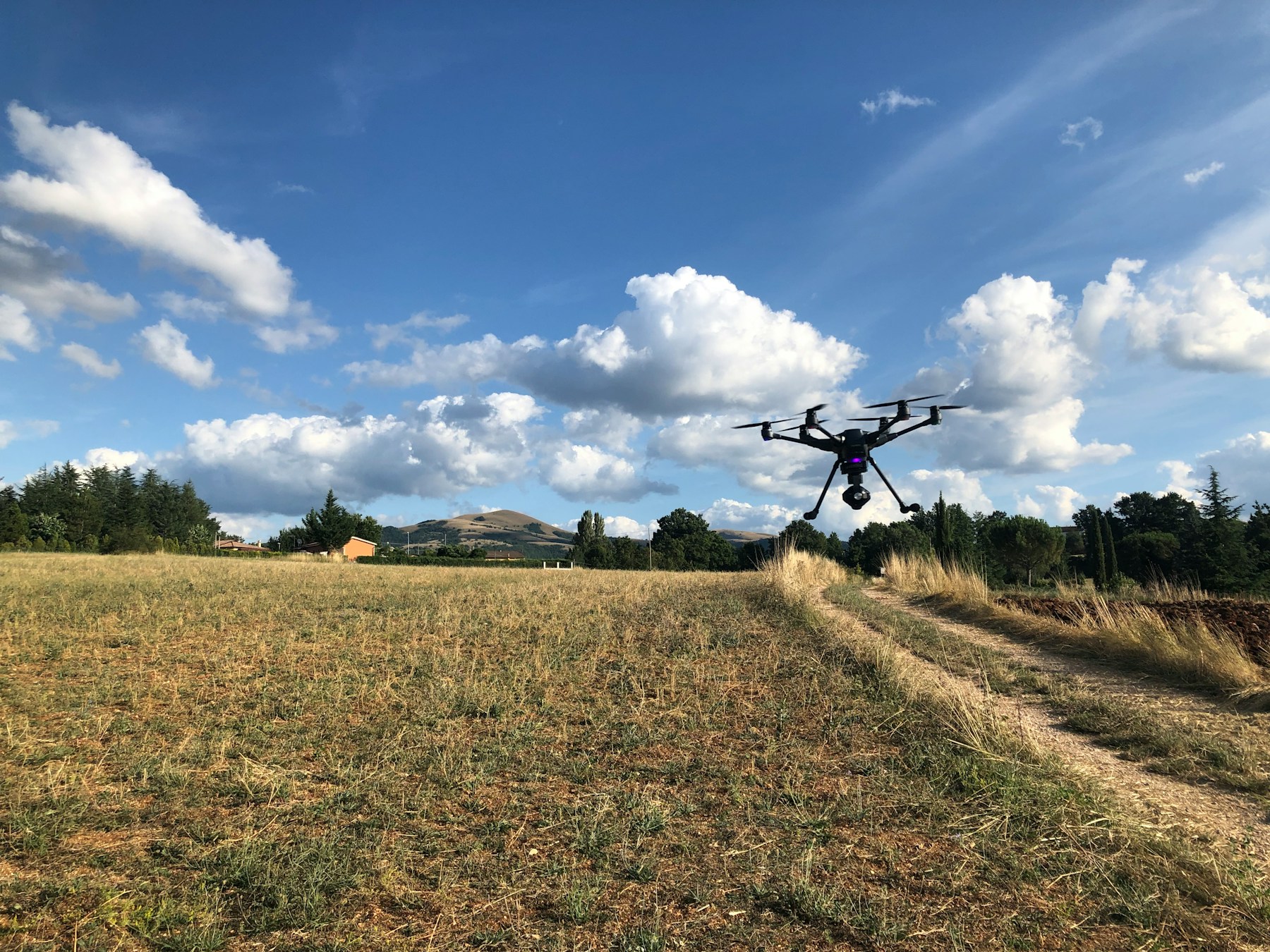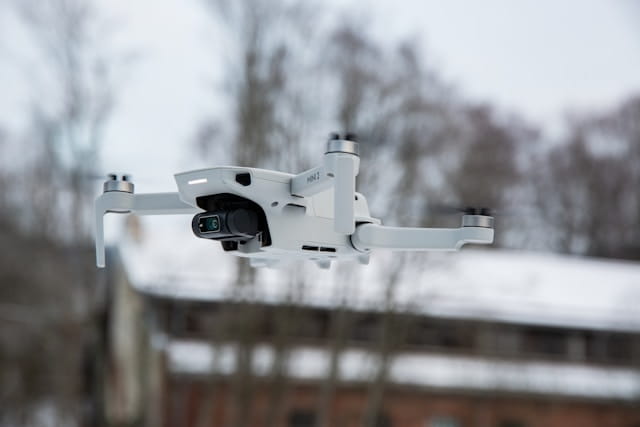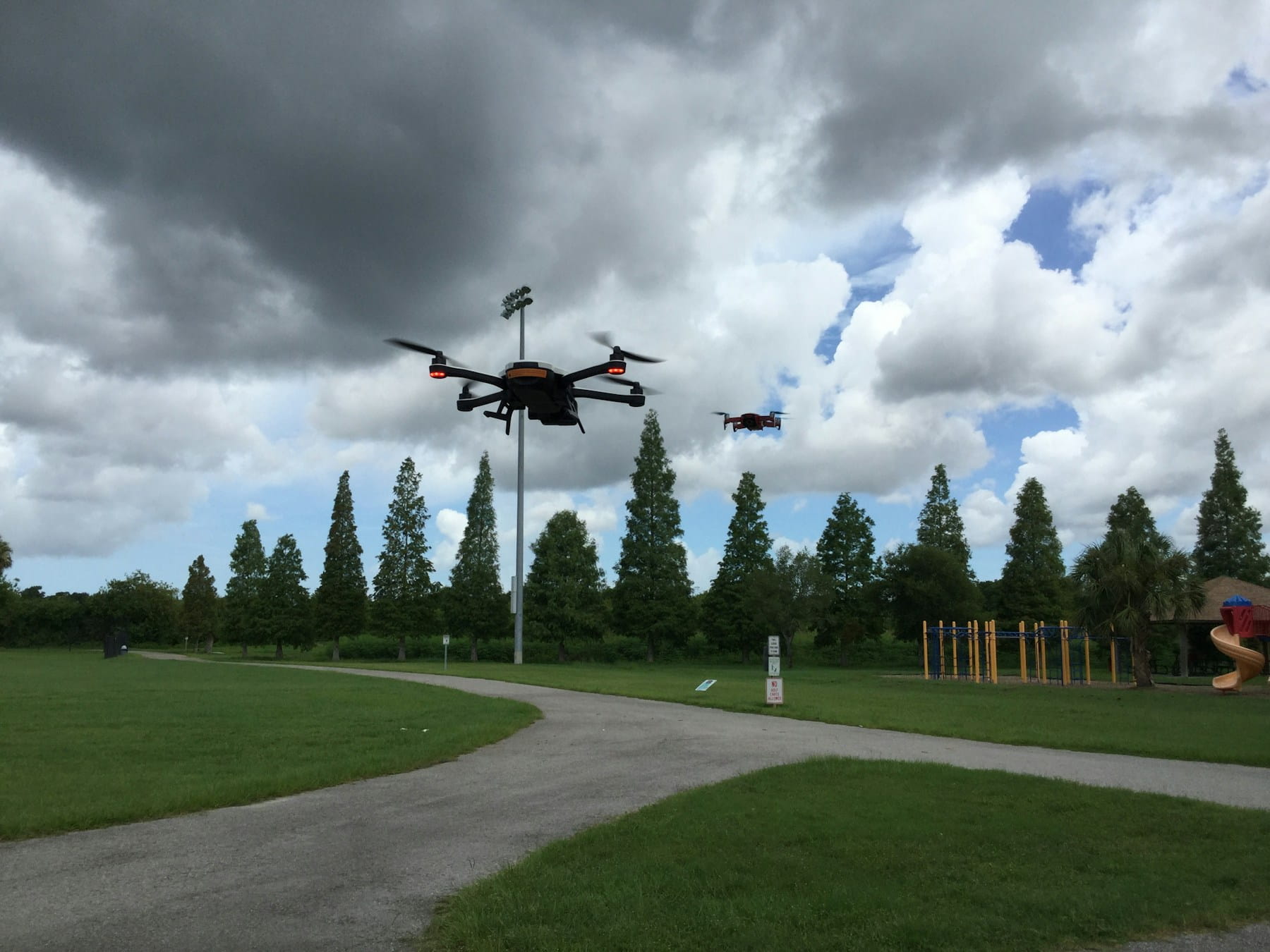What is Commercial Drone Insurance?
Commercial drone insurance provides specialized liability protection for professional UAS operators, covering property damage, bodily injury, equipment loss, and professional liability claims arising from commercial drone operations. Unlike standard business insurance, drone-specific policies address aviation risks including aircraft collisions, equipment failure, data liability, and regulatory compliance requirements unique to unmanned aerial systems.
Operating a commercial drone service comes with unique risks that traditional business insurance doesn't cover. When piloting unmanned aerial systems for clients, service providers face potential property damage, personal injury claims, and equipment loss that can quickly escalate into expensive legal battles.
Professional drone operators need specialized liability insurance that addresses both the technical complexities of UAS operations and the diverse environments where these services take place. The insurance landscape for drone services continues to evolve as the industry matures, creating both opportunities and challenges for commercial operators seeking comprehensive coverage. Proper drone operations software helps operators maintain the detailed records and documentation that insurers require for competitive pricing.
Table of contents
- Understanding drone service liability risks
- Types of liability insurance for drone operators
- Coverage requirements by industry sector
- Policy limits and deductible considerations
- Risk factors that affect insurance premiums
- Claims process and documentation requirements
- Regulatory compliance and insurance mandates
- Choosing the right insurance provider
- Cost management strategies for drone insurance
- Frequently Asked Questions
- Implementation Considerations
- In Summary
Understanding drone service liability risks
Commercial drone operations expose service providers to liability risks that extend far beyond typical business activities. Aircraft collisions with buildings, power lines, or vehicles can result in significant property damage and business interruption claims. Personal injury lawsuits may arise from drone crashes, privacy violations, or accidents during takeoff and landing procedures.
Equipment failure represents another major risk category. Mechanical malfunctions can lead to uncontrolled aircraft behavior, creating hazardous situations for people and property below the flight path. Software glitches or GPS interference might cause drones to deviate from planned routes, potentially entering restricted airspace or colliding with obstacles. Comprehensive drone maintenance programs help reduce equipment-related incidents.
Data liability poses increasing concerns for drone service providers. Aerial photography and mapping operations collect sensitive information that could be compromised through cybersecurity breaches or improper handling. Clients may hold service providers responsible for protecting confidential data captured during missions requiring strict compliance protocols.
Environmental factors create additional liability exposure. Weather conditions can change rapidly during flight operations, leading to loss of control or forced landings in inappropriate locations. Wildlife encounters, electromagnetic interference, and unexpected air traffic can all contribute to incidents that result in liability claims.
Professional negligence claims may arise when drone services fail to meet industry standards or client expectations. Inadequate flight planning, improper equipment selection, or failure to obtain necessary permits can expose operators to lawsuits alleging substandard service delivery.
The interconnected nature of drone operations means that single incidents can trigger multiple types of claims simultaneously. A collision with a building might involve property damage, business interruption, personal injury, and professional liability components, creating complex insurance scenarios that require comprehensive coverage approaches.
Types of liability insurance for drone operators
General liability insurance provides foundational protection against third-party bodily injury and property damage claims arising from drone operations. This coverage typically includes legal defense costs and settlement payments for incidents occurring during commercial flights. Standard general liability policies often exclude aviation activities, making drone-specific endorsements necessary.
Professional liability insurance protects against claims of negligent service delivery or failure to meet professional standards. This coverage becomes particularly important for specialized drone services like surveying, inspection, or mapping where clients depend on accurate data and expert analysis. Coverage includes defense costs for allegations of professional errors or omissions.
Aircraft hull insurance covers physical damage to drone equipment caused by crashes, theft, or vandalism. This property coverage typically includes not just the aircraft itself but also cameras, sensors, and other specialized equipment mounted on the drone. Policies may offer actual cash value or replacement cost coverage options.
Cyber liability insurance addresses data breaches and privacy violations related to information collected during drone operations. This coverage helps with notification costs, credit monitoring services, and regulatory fines resulting from compromised client data. Given the increasing digitization of drone services, cyber coverage becomes more relevant each year.
Product liability insurance protects manufacturers and distributors of drone equipment against claims arising from defective products. Service providers using modified or customized equipment may need this coverage if they make alterations that could affect aircraft safety or performance through their equipment management practices.
Premises liability coverage protects against claims arising from drone operations conducted at client locations or staging areas. This insurance addresses slip-and-fall accidents, property damage from ground support activities, or injuries to spectators during drone demonstrations.
Commercial auto liability may be required when transporting drone equipment to job sites using company vehicles. Standard auto policies might not cover specialized equipment being transported for commercial purposes, creating potential coverage gaps that need addressing through commercial endorsements.
Workers' compensation insurance becomes necessary when employing drone pilots or support staff. This coverage addresses medical costs and lost wages for work-related injuries, including incidents that occur during drone operations or equipment handling activities.
Coverage requirements by industry sector
Construction and infrastructure inspection services typically require higher liability limits due to the valuable assets being examined and the potential for significant business interruption losses. Projects near active construction sites or critical infrastructure demand coverage limits of $2 million or more per occurrence. Environmental liability endorsements may be necessary for projects involving hazardous materials or sensitive ecological areas.
Agricultural drone services face unique liability exposures related to crop spraying, livestock monitoring, and property boundary disputes. Pollution liability coverage becomes important when applying pesticides or fertilizers via drone platforms. Coverage for drift damage to neighboring properties represents a critical consideration for agricultural operators.
Real estate and marketing drone services require professional liability coverage for potential misrepresentation of property conditions or failure to capture required imagery. Privacy liability endorsements address potential claims from individuals appearing in aerial photographs or videos without consent. Media liability coverage protects against copyright infringement or unauthorized use of captured content.
Public safety and emergency response drone services need coverage that addresses governmental immunity limitations and potential civil rights violations. These operators often require higher liability limits due to the sensitive nature of their missions and the potential for constitutional claims arising from surveillance activities.
Media and entertainment drone services require specialized coverage for film and television production activities. Equipment coverage must account for expensive camera systems and specialized mounting hardware. Completion bond requirements may mandate specific insurance provisions to protect production investments.
Search and rescue drone services face liability exposures related to life safety decisions and coordination with other emergency responders. Coverage must address potential claims arising from navigation errors, communication failures, or delays in locating missing persons. Professional liability endorsements specific to emergency services may be necessary.
Industrial inspection services for power line, cell tower, and wind turbine facilities require coverage that addresses environmental damage and business interruption from inspection-related incidents. Explosion and pollution exclusions in standard policies often necessitate specialized endorsements for these high-risk environments.
Delivery and logistics drone services need coverage for cargo damage, theft, and delivery errors. Time-sensitive shipments may trigger business interruption claims if delivery delays cause financial losses to recipients. Coverage limits must account for the value of goods being transported and potential consequential damages.
Policy limits and deductible considerations
Liability limit selection requires careful analysis of potential claim scenarios and asset protection needs. According to industry standards for 2025, minimum limits of $1 million per occurrence provide basic protection but may prove inadequate for significant incidents involving expensive property or multiple injuries. Many commercial clients require service providers to maintain $2 million or higher liability limits as contractual requirements.
Aggregate limits represent the maximum amount insurers will pay for all claims during a policy period. Annual aggregate limits should reflect the volume and risk level of planned operations. High-frequency operators managing large drone fleets may need higher aggregate limits to avoid exhausting coverage before policy renewal.
Deductible amounts directly impact premium costs and cash flow requirements when claims occur. Higher deductibles reduce premium expenses but increase out-of-pocket costs for each claim. Service providers should select deductibles based on their financial capacity to handle immediate claim expenses.
Equipment coverage limits should reflect replacement costs for all drone systems and accessories used in operations. Depreciation schedules affect actual cash value settlements, while replacement cost coverage provides full replacement funding without depreciation deductions. Operators using expensive specialized equipment should consider agreed value coverage options.
Excess liability policies provide additional coverage above primary policy limits. Umbrella policies offer broader coverage that may fill gaps in underlying policies, while excess policies simply increase limits for covered perils. Large commercial operators often require excess coverage to achieve adequate total liability protection.
Per-occurrence limits apply to individual incidents regardless of the number of claims arising from the same event. Multiple parties injured in a single drone crash would share the per-occurrence limit. Annual aggregate limits cap total payouts for all incidents during the policy term.
Professional liability limits should reflect the potential financial impact of service errors or omissions. Data errors in surveying or mapping services could result in expensive re-work or project delays. Service providers handling large commercial projects need higher professional liability limits to address potential consequential damages.
Geographic limitations in policies may restrict coverage to specific countries or regions. International drone services require careful review of territorial coverage provisions. Some policies exclude coverage for operations in high-risk countries or regions experiencing political instability.
Risk factors that affect insurance premiums
Pilot experience and training credentials significantly impact insurance pricing. Operators with extensive flight hours, advanced certifications like Part 107, and clean safety records typically receive better premium rates. Insurance companies may require specific pilot training programs or recency requirements to maintain favorable pricing.
Aircraft specifications influence premium calculations based on weight, complexity, and safety features. Larger drones with higher kinetic energy pose greater liability risks and typically command higher premiums. Advanced safety systems like obstacle avoidance and return-to-home functions may provide premium discounts.
Operational environments affect risk assessments and pricing structures. Urban operations near populated areas generally carry higher premiums than rural agricultural flights. Operations near airports, critical infrastructure, or sensitive facilities may face premium surcharges or coverage restrictions due to airspace considerations.
Service types determine exposure levels and premium structures. High-risk activities like close-proximity inspections or beyond visual line of sight operations typically cost more to insure than basic aerial photography services. Specialized services requiring unique equipment or techniques may face limited insurer availability.
Claims history significantly impacts renewal pricing and coverage availability. Frequent claims or large settlement amounts can result in premium increases or policy non-renewal. Operators should implement comprehensive risk assessment programs to minimize claim frequency and severity.
Geographic factors influence pricing based on local weather patterns, population density, and legal environments. Areas prone to severe weather events or having plaintiff-friendly legal systems may face higher premium rates. Regulatory complexity in certain jurisdictions can also affect pricing structures.
Safety management systems and risk mitigation practices can earn premium discounts from many insurers. Documented maintenance programs, comprehensive pilot training, and incident reporting systems demonstrate proactive risk management that insurers value through reduced pricing. Professional operations management platforms help maintain the systematic records insurers recognize.
Fleet size and utilization patterns affect pricing structures and available coverage options. Large fleets may qualify for volume discounts but also face increased aggregate exposure that requires careful limit selection. Seasonal operators may benefit from policy structures that reflect actual operational periods.
Business financial stability impacts insurer underwriting decisions and pricing. Strong financial statements and established business operations typically receive better pricing than startup ventures. Credit ratings and business longevity factor into risk assessment calculations.
Claims process and documentation requirements
Immediate incident notification requirements vary by insurer but typically mandate contact within 24-48 hours of occurrence, as outlined in 2025 insurance industry best practices. Delayed reporting can jeopardize coverage or complicate claim investigations. Service providers should establish clear incident response procedures that include immediate insurer notification protocols.
Documentation requirements for liability claims include detailed incident reports, witness statements, and photographic evidence of damage. Flight logs and equipment maintenance records help establish operational compliance and equipment condition at the time of occurrence. GPS tracking data and telemetry records provide valuable incident reconstruction information.
Property damage claims require careful documentation of affected assets and their conditions before and after incidents. Professional damage assessments may be necessary for expensive property or complex damage scenarios. Business interruption claims need documentation of lost revenue and additional expenses resulting from incidents.
Professional liability claims require extensive documentation of service delivery protocols, quality control measures, and client communications. Contract terms and specifications help establish performance standards and liability limitations. Expert witness testimony may be necessary to address technical aspects of professional service delivery.
Third-party cooperation in claim investigations can significantly impact settlement timelines and outcomes. Service providers should maintain positive relationships with clients and affected parties to facilitate smooth claim resolution processes. Legal representation may become necessary for complex or disputed claims.
Claim reserves established by insurers reflect their assessment of potential settlement costs and legal expenses. These reserves can affect policy renewal terms and pricing. Operators should work closely with insurers to provide information that supports accurate reserve setting and timely claim resolution.
Settlement negotiations require careful consideration of liability exposure and potential precedent-setting effects. Early settlement offers may provide cost-effective resolution but could establish unfavorable precedents for future claims. Legal counsel consultation becomes important for significant claims or those involving disputed liability.
Subrogation opportunities allow insurers to recover claim payments from responsible third parties. Equipment manufacturers, maintenance providers, or other service providers may share liability for incidents involving their products or services. Cooperation with subrogation efforts can help control overall claim costs.
Claim closure documentation should include final settlement agreements, releases, and any ongoing monitoring requirements. Professional liability claims may require extended monitoring periods to identify potential delayed damages or secondary effects from service delivery errors.
Regulatory compliance and insurance mandates
Federal Aviation Administration regulations do not explicitly require commercial drone operators to maintain liability insurance coverage for operations under Part 107. However, specific coverage amounts may be requested by clients based on operational complexity and risk factors. Certificate of coverage requirements often apply for certain types of commercial operations or client contracts.
State and local insurance requirements can exceed federal minimums and vary significantly across jurisdictions. Some states require specific coverage types or limits for drone operations within their boundaries. Municipal requirements may include additional coverage for operations in urban areas or near critical infrastructure.
Client contractual requirements often exceed regulatory minimums and specify particular coverage types, limits, and insurer rating requirements. Government contracts frequently require higher limits and additional coverage types like cyber liability or environmental impairment coverage. Private sector clients may require specific endorsements or policy language modifications.
International operations require compliance with destination country insurance regulations and reciprocal coverage agreements. Some countries mandate local insurance placement or specific coverage types for foreign operators. Export control regulations may affect equipment coverage for international operations.
Aviation authority requirements in different jurisdictions may specify minimum coverage amounts, approved insurer ratings, or required policy provisions. European Union regulations differ from U.S. requirements and may mandate specific coverage types for certain operational categories under EC785/2004 for commercial operators.
Professional licensing requirements often include insurance mandates for certified drone service providers. Survey, inspection, or real estate licensing boards may specify minimum coverage requirements for members providing drone services within their professional scope.
Continuing compliance obligations require ongoing monitoring of regulatory changes and policy updates. Insurance requirements can change with new regulations or operational expansions into different service areas or geographic regions. Regular policy reviews help ensure ongoing compliance with applicable requirements.
Certificate of insurance requirements specify the documentation needed to demonstrate coverage compliance. Standard certificate forms may not address all requirements for drone operations, necessitating specialized certificates or additional documentation. Electronic certificate management systems help streamline compliance documentation processes.
Choosing the right insurance provider
Insurer experience with drone operations significantly impacts coverage quality and claims handling expertise. Specialized aviation insurance providers often provide better coverage terms and more knowledgeable claims handling than general commercial lines insurers. Industry experience translates to better understanding of operational risks and appropriate coverage structures.
Financial strength ratings indicate insurers' ability to pay claims and maintain operations during challenging economic conditions. A.M. Best ratings of A- or better generally indicate financially stable insurers capable of handling large claims. Rating agency reports provide insight into insurer financial trends and stability outlook.
Coverage flexibility allows policies to adapt to changing business needs and operational expansions. Insurers offering modular coverage options or easy endorsement additions provide better long-term partnerships for scaling drone businesses. Restrictive policy language can limit operational flexibility and growth opportunities.
Claims handling reputation significantly impacts the insurance experience during stressful claim situations. References from other drone operators and industry professionals provide valuable insights into insurer claims practices. Online reviews and industry publications often discuss insurer performance and customer satisfaction levels.
Premium competitiveness should be evaluated alongside coverage quality and service levels. The lowest premium may not provide the best value if coverage gaps exist or claims handling proves inadequate. Multi-year policy commitments may provide better pricing stability for established operators.
Underwriting flexibility affects coverage availability for unique or specialized operations. Some insurers specialize in standard operations while others accommodate unusual risks or experimental technologies. Underwriter aviation expertise influences their ability to properly assess and price drone service risks.
Policy administration services impact ongoing insurance management efficiency. Electronic policy management systems, online certificate generation, and automated billing processes reduce administrative burden for busy operators. Dedicated account management provides personalized service and better problem resolution.
Risk management support services help operators improve safety practices and reduce claim frequency. Training programs, safety consultations, and best practice guidance provide value beyond basic insurance coverage. Loss control services demonstrate insurer commitment to long-term partnership success.
Geographic coverage capabilities determine insurer suitability for operators with multi-state or international operations. National insurers may provide better coverage consistency across different locations. International capabilities become important for global service providers or those expanding internationally.
Cost management strategies for drone insurance
Risk management programs can significantly reduce insurance costs through demonstrated safety practices and loss prevention measures. Comprehensive safety management systems, regular pilot training, and equipment maintenance programs often qualify for premium discounts. Documentation of these programs provides evidence of proactive risk management that insurers value.
Deductible optimization balances premium savings against claim cost exposure. Higher deductibles reduce premium costs but require sufficient cash flow to handle claim payments. Self-insurance programs for smaller claims can provide cost savings for operators with strong financial positions and effective risk management.
Policy bundling opportunities may provide discounts when combining multiple coverage types with the same insurer. Package policies covering general liability, professional liability, and equipment coverage often cost less than separate policies. Commercial package policies can include drone coverage as endorsements to existing business insurance.
Fleet management practices affect both safety outcomes and insurance costs. Standardized equipment reduces training needs and maintenance complexity through effective equipment management. Centralized maintenance programs and inventory management can improve safety records and qualify for fleet discounts.
Training and certification investments often provide long-term insurance savings through improved safety records and reduced claim frequency. Advanced pilot certifications, manufacturer training programs, and safety management system implementation demonstrate commitment to safe operations that insurers recognize through better pricing.
Market timing strategies can help optimize insurance purchases during favorable market conditions. Insurance market cycles affect pricing and coverage availability. Working with experienced brokers helps identify optimal timing for policy renewals and coverage changes.
Claim management practices significantly impact long-term insurance costs and availability. Prompt reporting, thorough documentation, and proactive claim resolution help control costs and maintain favorable relationships with insurers. Aggressive claim management can prevent small incidents from becoming expensive claims.
Coverage optimization involves regular policy reviews to eliminate unnecessary coverage and ensure adequate protection for current operations. Business changes, equipment updates, and operational expansions require policy adjustments to maintain appropriate coverage levels without paying for unneeded protection.
Group purchasing programs may provide cost savings for smaller operators through shared negotiating power and risk pooling. Industry associations or buying groups can leverage collective volume to obtain better rates than individual operators might achieve independently.
Frequently Asked Questions
How much does commercial drone insurance cost?
Commercial drone insurance costs vary significantly based on coverage types, limits, and operational factors. According to 2025 industry data, a standard $1 million liability policy typically ranges from $500 to $1,000 annually, with monthly options available from $50 to $100. Hull coverage for equipment protection generally costs 8-12% of the drone's insured value. Factors affecting cost include pilot experience, aircraft specifications, service types, claims history, and geographic location. High-risk operations like urban inspections or BVLOS flights command higher premiums than basic aerial photography services.
What insurance is legally required for Part 107 commercial operations?
The FAA does not mandate liability insurance for Part 107 commercial drone operators at the federal level. However, practical requirements differ significantly—most clients, venues, government agencies, and municipal permits require proof of insurance before allowing operations. Industry standards typically demand minimum $1 million liability coverage, with many commercial contracts requiring $2-5 million. State and local jurisdictions may impose their own insurance mandates, creating a patchwork of requirements that vary by location. While not federally required, operating without insurance exposes businesses to substantial financial risk and limits contract opportunities.
Does general business insurance cover commercial drone operations?
Standard business general liability policies typically exclude aviation-related activities, meaning commercial drone operations require specialized coverage. Most traditional business insurance policies contain aviation exclusions that deny coverage for UAS operations, property damage, or injuries arising from aircraft use. Drone operators need dedicated aviation liability policies or specific endorsements added to their business insurance that explicitly cover unmanned aircraft operations. Professional liability (errors and omissions) coverage also requires drone-specific language to address data accuracy, service delivery, and technical standards unique to aerial services.
What's the difference between hull coverage and liability coverage for drones?
Hull coverage protects the physical drone equipment itself—the aircraft, cameras, sensors, and mounted accessories—against damage from crashes, theft, fire, or vandalism, similar to comprehensive auto insurance. This is property coverage that reimburses repair or replacement costs for your equipment. Liability coverage, conversely, protects against third-party claims for bodily injury or property damage caused by your drone operations, including legal defense costs and settlements. Most professional operators need both: hull coverage protects their business assets (equipment investment), while liability coverage protects against claims from others injured or whose property is damaged by drone operations. Hull coverage typically costs 8-12% of equipment value annually, while liability coverage depends on operational risk factors.
Implementation Considerations
Establishing comprehensive drone insurance coverage requires systematic evaluation of operational exposures, coverage needs, and provider options. Operators should begin by documenting all service types, equipment inventories, geographic operating areas, and client contract requirements to identify specific coverage needs.
Risk assessment processes help prioritize coverage decisions and identify areas requiring enhanced protection or risk mitigation measures. Conducting formal operational risk assessments reveals exposure patterns that inform appropriate policy limits and coverage types. Historical incident data from similar operations provides valuable insights into likely claim scenarios.
Insurance broker relationships provide valuable guidance through complex coverage decisions and market navigation. Brokers specializing in aviation or commercial drone coverage understand unique operational exposures and can access specialized insurance markets unavailable to direct purchasers. Experienced brokers help structure coverage programs that balance protection needs with budget constraints while ensuring compliance with contractual and regulatory requirements.
Policy implementation requires careful coordination with operational procedures and documentation systems. Effective drone operations management platforms help maintain the flight logs, maintenance records, and compliance documentation that insurers require for underwriting and claims processing. Systematic record-keeping demonstrates risk management practices that can qualify for premium discounts.
Regular coverage reviews ensure insurance programs adapt to evolving business needs and operational changes. Annual policy reviews should assess equipment inventories, service expansions, client requirement changes, and regulatory updates that might necessitate coverage adjustments. Proactive coverage management prevents gaps that could expose businesses to uninsured losses.
In Summary
Commercial drone insurance represents a critical investment for professional UAS operators, providing financial protection against the diverse liability exposures inherent in unmanned aircraft services. Specialized coverage addresses risks that traditional business insurance excludes, from aircraft collisions and equipment failures to professional liability and data breaches.
Effective insurance programs require comprehensive understanding of operational exposures, coverage options, and regulatory requirements. Operators must balance adequate protection with cost management, selecting appropriate policy limits, deductibles, and coverage types that align with service offerings and client requirements. Industry standards typically require minimum $1 million liability coverage, though many commercial contracts mandate higher limits.
The insurance landscape continues evolving alongside drone technology and regulatory frameworks. Professional operators who establish strong insurer relationships, implement robust risk management practices, and maintain systematic documentation position themselves for sustainable business growth. Proper coverage not only protects against financial losses but also demonstrates professional credibility necessary for securing high-value commercial contracts.
Strategic insurance management extends beyond simply purchasing policies—it encompasses ongoing risk assessment, claims management, safety program development, and coverage optimization. Organizations that integrate insurance considerations into operational planning and invest in comprehensive documentation systems achieve both better coverage terms and enhanced operational efficiency.
Ready to Streamline Your Drone Insurance Management?
Professional drone operations require more than just insurance coverage—they demand systematic documentation and risk management that satisfies insurer requirements while supporting operational efficiency. Whether you're managing pilot certifications, tracking flight hours, or maintaining equipment records, integrated operational platforms help demonstrate the professional practices insurers recognize with favorable pricing.
Start your free trial today — no credit card required.
Or book a demo to see how DroneBundle helps operators maintain comprehensive documentation for compliance tracking and fleet management that reduces insurance costs while protecting your business.




